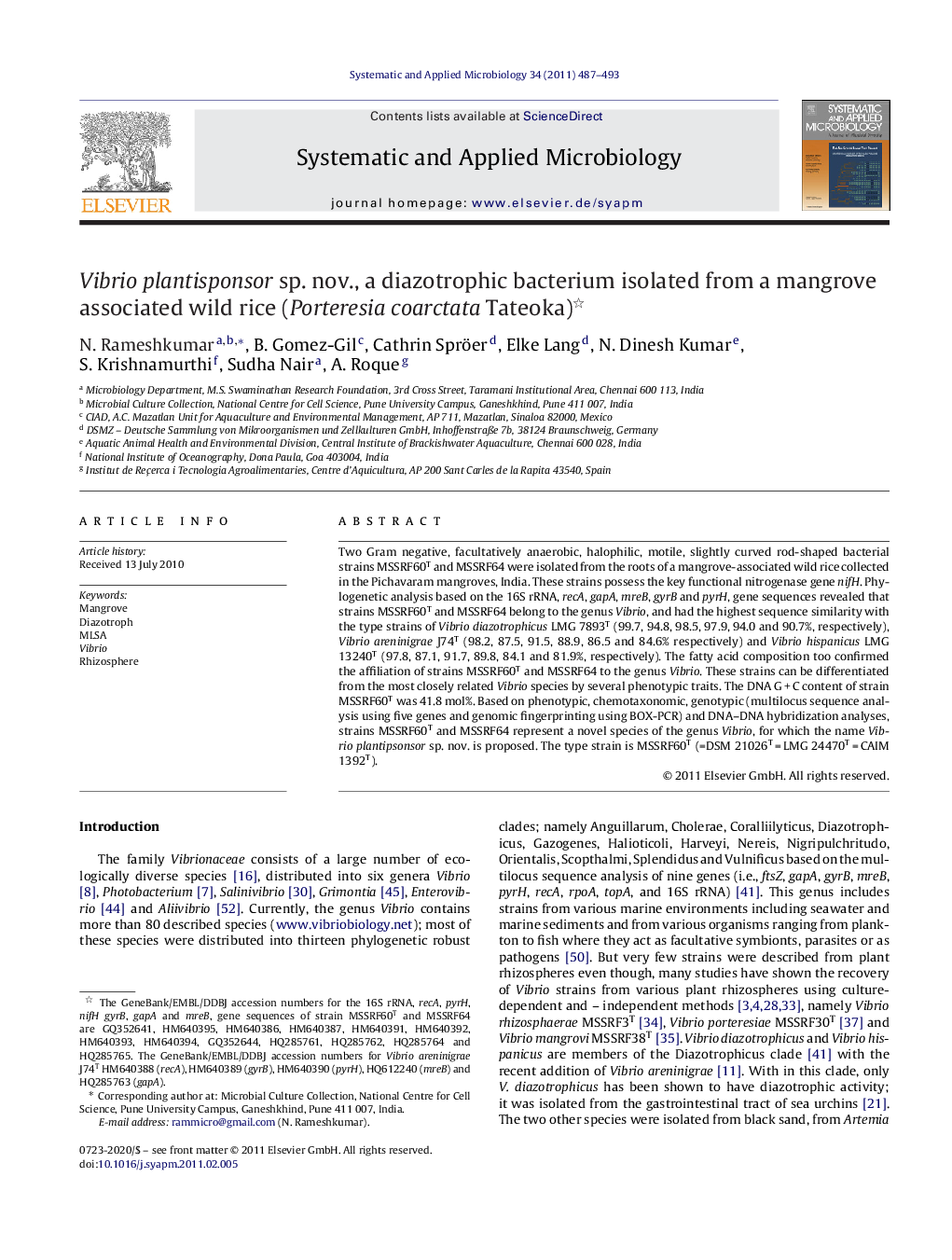| Article ID | Journal | Published Year | Pages | File Type |
|---|---|---|---|---|
| 2063851 | Systematic and Applied Microbiology | 2011 | 7 Pages |
Two Gram negative, facultatively anaerobic, halophilic, motile, slightly curved rod-shaped bacterial strains MSSRF60T and MSSRF64 were isolated from the roots of a mangrove-associated wild rice collected in the Pichavaram mangroves, India. These strains possess the key functional nitrogenase gene nifH. Phylogenetic analysis based on the 16S rRNA, recA, gapA, mreB, gyrB and pyrH, gene sequences revealed that strains MSSRF60T and MSSRF64 belong to the genus Vibrio, and had the highest sequence similarity with the type strains of Vibrio diazotrophicus LMG 7893T (99.7, 94.8, 98.5, 97.9, 94.0 and 90.7%, respectively), Vibrio areninigrae J74T (98.2, 87.5, 91.5, 88.9, 86.5 and 84.6% respectively) and Vibrio hispanicus LMG 13240T (97.8, 87.1, 91.7, 89.8, 84.1 and 81.9%, respectively). The fatty acid composition too confirmed the affiliation of strains MSSRF60T and MSSRF64 to the genus Vibrio. These strains can be differentiated from the most closely related Vibrio species by several phenotypic traits. The DNA G + C content of strain MSSRF60T was 41.8 mol%. Based on phenotypic, chemotaxonomic, genotypic (multilocus sequence analysis using five genes and genomic fingerprinting using BOX-PCR) and DNA–DNA hybridization analyses, strains MSSRF60T and MSSRF64 represent a novel species of the genus Vibrio, for which the name Vibrio plantipsonsor sp. nov. is proposed. The type strain is MSSRF60T (=DSM 21026T = LMG 24470T = CAIM 1392T).
